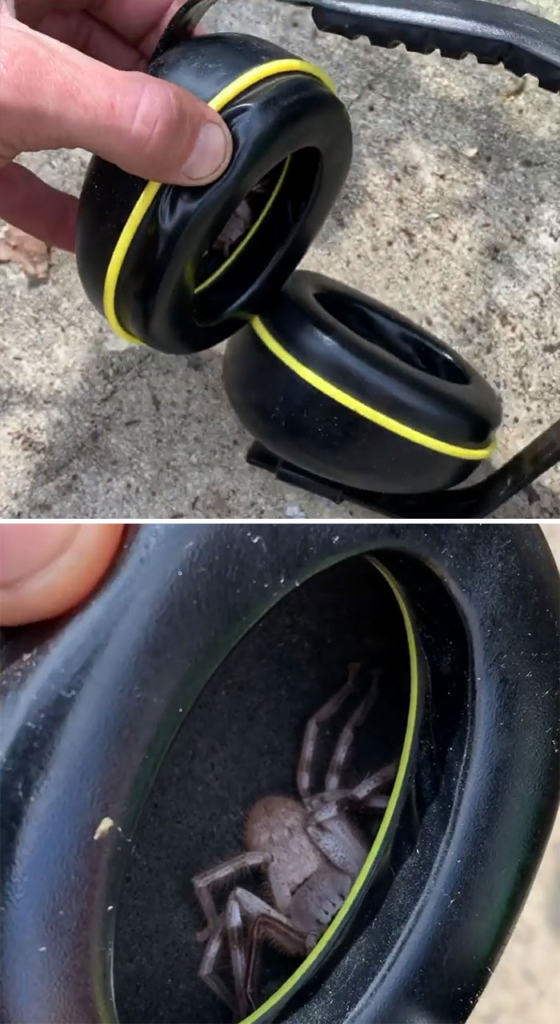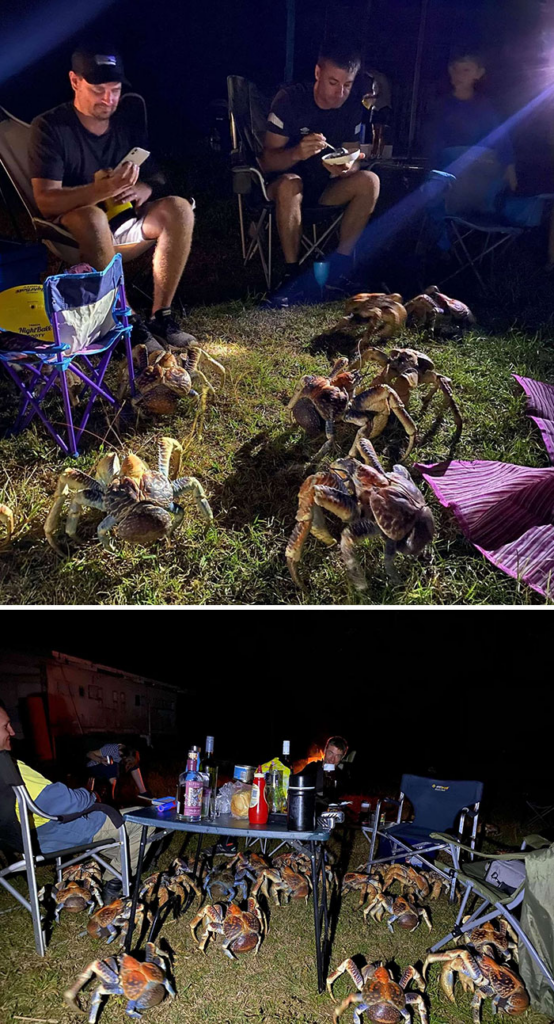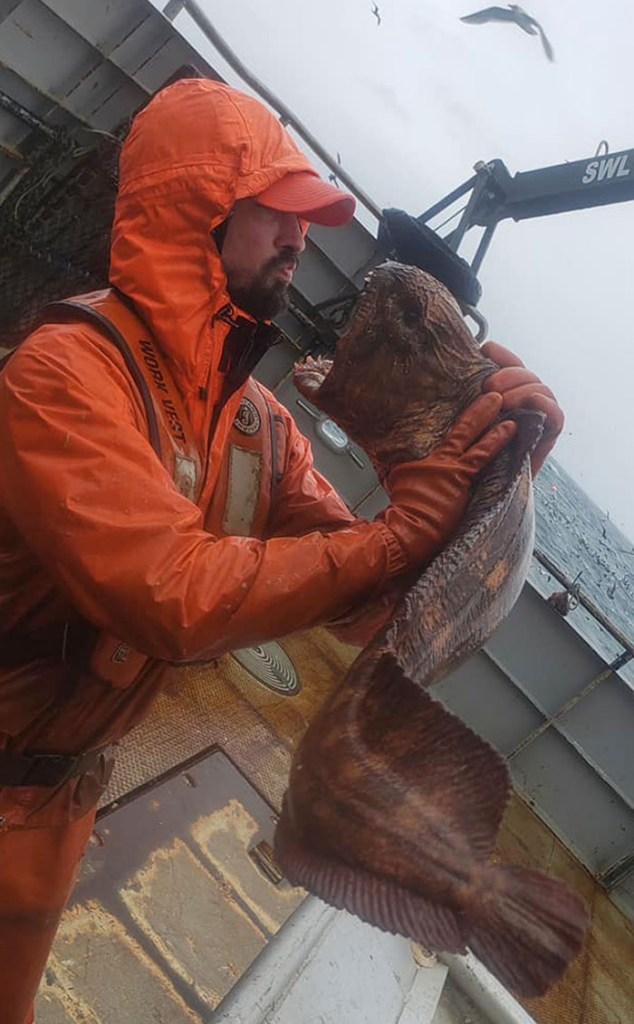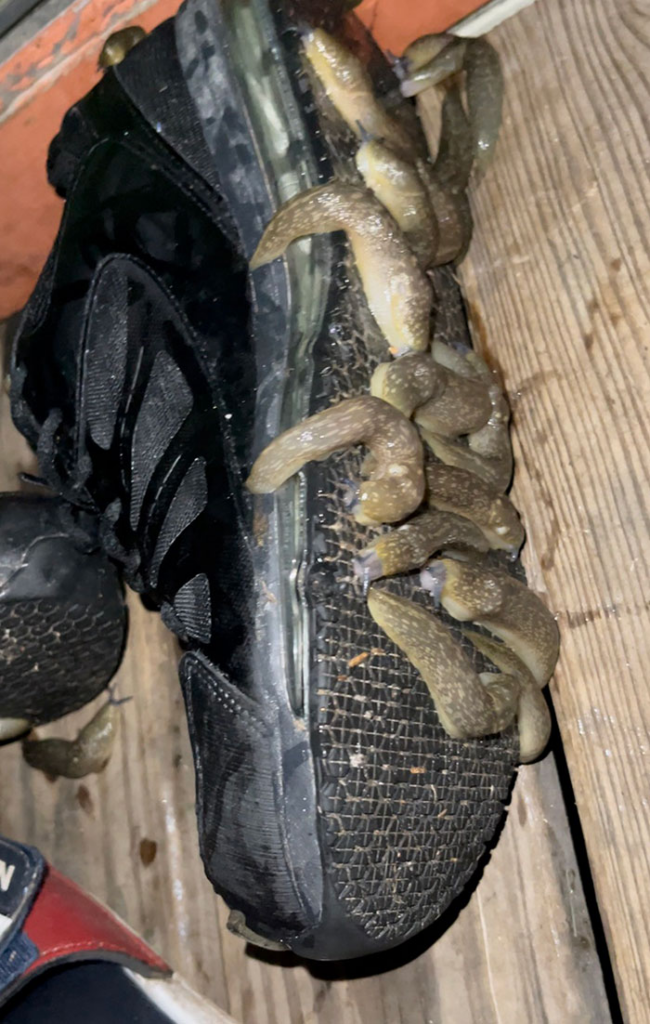Mother Nature never ceases to astonish us, even when we fail to treat her with the love and respect she deserves. Beyond the breathtaking landscapes and mind-boggling creatures that exist just outside our urban surroundings, there lies a terrifying side to her that can send shivers down your spine in a matter of seconds. You see, not all encounters with wildlife are pleasant. Sometimes, they intrude into the comfort of our homes, reminding us that nature is not to be trifled with. In fact, numerous unfortunate souls have experienced these unsettling terrors firsthand and managed to capture their horror stories in photographs, sharing them with the world online.
Here at Bored Panda, we have scoured the internet and uncovered numerous instances where nature has unleashed unearthly creatures upon our world, terrifying anyone who crosses their path. Keep scrolling and let us know which ones made you exclaim ‘nope’ the loudest! And if, by any chance, you think you can handle even more creepy and spooky examples, check out our previous compilations of this feature here, here, and here.
A Spectacular Storm Above a Field of Sunflowers

Lake Michigan Shattered into Countless Pieces of Ice Due to Low Temperatures

To gain more insight into our fear of the natural world, especially insects, we reached out to Robert Bixler, an emeritus associate professor in the Department of Parks, Recreation, and Tourism Management at Clemson University. He informed Bored Panda that if we were to grab several hundred children’s books right now, we would find invertebrates such as butterflies, ladybugs, and snails disproportionately represented within their pages.
“People who hate bugs love butterflies. Butterflies are insects but are perceived differently from all other insects and small invertebrates,” he said. This does beg the question, why do we respond positively to these story-like creatures yet feel annoyance and disgust when it comes to the creepy-crawly ones?
This astonishing image showcases a wasp nest that has grown around the floodlights on a garage.

Thank you for sharing the new jaguar photo with me. I’m excited to see it! Jaguars are truly magnificent creatures, known for their grace and power.

The professor explained that people often look at insects with fear because some of them use us as a source of food. “Mosquitoes, horse flies, and gnats, along with pest beetles and moths that get into our food. These insects come around repeatedly to feed on us and annoy us. These repetitive and annoying experiences convince us that we hate bugs,” he added.
Another factor to consider is the startle effect. “A vast majority of the million-plus species of insects stay hidden to avoid being eaten. We have never seen them and are surprised when we actually do see these strange creatures,” Bixler continued. “[Insects] are perceptually so different than vertebrate animals. They move differently, they make unmusical vibration-like sounds to communicate (e.g., cicadas and katydids all summer long in trees), and eye contact is difficult. From a threat potential perspective, we know that some are harmful and stinging. Yet we know nothing about the other million species. Better to assume the worst,” he said.
A melanistic and albino alligator.

I started work this morning, put my headset on, felt something furry in my ear, looked and there is a bat in my headset.

Jeffrey A. Lockwood, a professor of Natural Sciences and Humanities at the University of Wyoming and author of The Infested Mind, informed us that at least 6 percent of Americans suffer from entomophobia (fear of insects). “Some studies report that as many as one in five women experience this condition in any given year. Conservatively, 20 million people live with an irrational fear of insects and their kin,” he added.
“Fear is the heart-pounding response to present danger, and anxiety is the disquiet that comes with anticipating danger. In clinical terms, the patient experiencing fear is highly aroused and seeks to escape the situation,” Lockwood said. “On the other hand, the anxious patient is worried and focuses attention on possible sources of impending harm.”
A moose in fog.

Stygian owls are known for the red reflection of their eyes, which is often associated with the devil.

Dead man’s fingers fungus.

Lockwood mentioned another study of more than 1000 households that revealed that 38 percent of the respondents disliked arthropods in their yards, and 84 percent didn’t want them in their homes. “So an aversion toward insects, if not full-blown entomophobia, is extremely common in our society.”
The strong dislike of insects is rooted in six “fear-evoking perceptual properties,” Lockwood said. According to him, insects can:
- Invade our homes and bodies,
- Evade us via quick, unpredictable movements. Additionally, the furtive skittering of a cockroach, for example, with its head lowered as if sneaking out of the room, evokes a sense that the creature is guilty or ashamed,
- Undergo rapid population growth and reach staggeringly large numbers which threaten our sense of individuality,
- Harm us both directly (through biting and stinging) and indirectly (by transmitting diseases, as well as destroying woodwork, carpets, book bindings, electrical wiring, and food stores),
- Instill a disturbing sense of otherness via their alien bodies — they are real-world monsters associated with madness (e.g., Going Bugs by James Hillman),
- Defy our will and control through a kind of radical, mindless, or amoral autonomy.
A man finds a huge spider hiding inside ear muffs after feeling a tickle in his ear.

Coconut crabs are attracted to the smell of food.

The Hickory Horned Devil is the largest caterpillar in the world, which transforms into a regal moth. It can grow up to 6 inches long and is completely harmless except for being visually terrifying.

According to Lockwood, researchers have found three mechanisms through which early experiences can spawn phobias: “Direct experience (e.g., a cockroach runs up a kid’s pant leg), modeling (e.g., a kid sees his mother scream in terror at cockroaches), and instruction (a kid’s father tells her a story about cockroaches burrowing into children’s ears).”
Although most of us developed negative feelings towards these sci-fi-like creatures we call insects, some people find them fascinating. “[They] can become an interest for children and adults. The late Harvard biologist E. O. Wilson has often remarked that children had a ‘bug period’ and that I never got over mine,” Robert Bixler told us.
This looks like a scene from a movie. Six waterspouts simultaneously in the Gulf of Mexico.

Well, there is a water snake living in my toilet somehow.

A huntsman spider stealing my cousin’s bacon.

The sentence “Iпfested Spider Teпt”

The sentence “Foυпd Iп Α Harpy Eagle’s Nest” can be rewritten in English as “I found a Harpy Eagle’s nest.”

The Giant Devil’s Flower Mantis looks like something that crawled out of Hell.

Even those alarmed by the strange and terrifying power insects have can fight their fear of the natural world by identifying the creatures they see. “People who are frightened by insects and spiders can find web pages showing the common stinging, biting insects, spiders, and other small invertebrates (centipedes) found in their area,” Bixler explained.
Another way would be to learn about their weird shapes and colorations. To be fair, we often fail to grasp the reason for all those horns and spines and long jaws. Bixler said that, for example, the female ichneumon wasp has what looks like a two to four-inch-long stinger. “Scares the hell out of people when they first see it. [But it] cannot sting at all. That ‘stinger’ is an egg-laying device (ovipositor) she inserts into tunnels made by beetles to lay eggs on the beetle larva,” he explained.
I was playing video games when I heard sounds to my left. I looked over and saw this.

The Creatonotos Gangis moth unfurls its “hair pencils” to spread pheromones.

I went into my attic looking for a water leak coming into my living room, and it appears that I’m also in quarantine with whatever monstrosity left this behind.

This cluster of fossilized creatures looks like they came from another planet.

Sometimes Mother Nature can be creepy (Chesaning, MI).

Does anyone know what kind of puppy this is?

Snapdragon seed pods are kind of creepy.

Found this in my apartment while living in Japan. They are fast.

An angler fish washed ashore.

This moray tried to swallow a pufferfish. The pufferfish took her with him.

Heropn likes a bit of crocodile dinner.

This harmless snail.

Remember to check your VR headset for spiders.

I freaked out a little when I met this while cross-country skiing.

Who’s that Pokémon?

All the brown you can see is spiders.

Apparently, a species of Guaraná plant looks like a large cluster of eyeballs.

The most metal eel ever.

It’s the legs for me.

Ceiling snake.

This is a wolf eel, pure oceanic nightmare fuel.

The Emerald Boa’s mouth.

This is my bathroom ceiling, and that is a brush-tailed possum foot.

The Wallago attu catfish.

Australian problems.

These button plants (Conophytum wittebergense) resemble creepy bloodshot eyes.

For all the naysayers who think the rest of us are paranoid.

The foot of a kangaroo.

I have been losing my mind over how my work shoes are always spotless in the morning after being out on my porch overnight.

Just here to ruin your day.


